Saturday, December 1, 2012
Holiday Break
Hello all. I'm afraid there's not a new post this week. I've moved and haven't had time to prepare one. Today we found out it will be another week or so before we have Internet. So, I need to take a break from posting. Sorry to disappoint. Check out the archives again to get you fix. New post will be up in the new year. Happy Holidays!
Sunday, November 25, 2012
Callison Library
This week brings part II of the UW-SLA library crawl. Last week's post detailed the group's tour of the EPA Region 10 Library. The text is again provided by Ann Pool, SLA-UW Distance Representative, and photos by Violet Fox, co-Vice Chair.
---------------------------------------------------------
From the EPA we walked to Callison, a nearby architecture firm. Cindy Davis served us Halloween cookies and showed us the library. Cindy started in marketing at Callison in 1995 after working in a combination marketing/librarian position in Dallas. She pitched the idea of a library and got the green light to start one.

Cindy and her assistant Erin Williamson support a staff of about 400. They get a wide variety of research questions. One day they might find examples of architectural projects using faux and live interior landscapes for comparison, and the next day look up the water systems and climate in a foreign city.
Architects tend to be very visual and often don’t want a lot of text. They like to see what their peers around the world are doing and keep up with current trends. Print materials are still the norm in the library due to the focus on visual information. This keeps the library back from the cutting edge technologically, but focused on the particular needs of those it serves. However, they do have an Intranet site for accessing collections and checking out materials.
The library supports code compliance by making sure the company has complete and up-to-date codes and product standards, often via online access. International projects often are designed to a US-based international code, generally more stringent than local codes. They can also be handed off to overseas firms who handle code compliance. The firm is less involved in the construction phase, but does focus on sustainability. The collection includes resources on sustainable products, and both Cindy and Erin are LEED accredited and understand standards and product requirements.
Cindy developed a cataloging system for the library modeled after the company and its own products and services, putting herself in the architects’ shoes and making materials easy for them to find. Categories include monographs about particular architects, materials, and specific types of buildings.
We also got to see the Design Resource Center, a gallery of resources for interior components and finishes. Anything you can imagine covering a wall or floor or topping a counter can be found there. Lindsay, the center’s manager, works with sales reps on projects and stays abreast of current trends. She puts on product showcases, bringing in vendors to display new products and meet staff members.
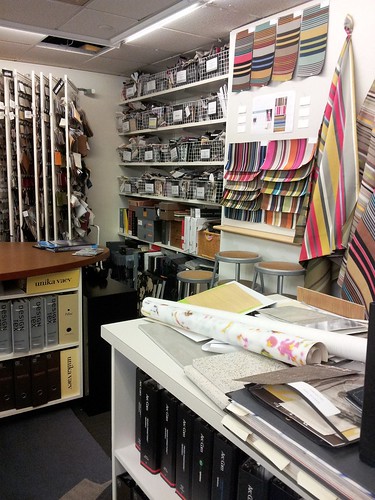
Cindy suggests that special librarians understand the library and company’s purposes, and ask lots of questions. Working with different kinds of people, from designers to project managers to IT staff is another key to success. People are often willing to shed their egos with librarians and get our help because they know that we can make them look good. We’ll be challenged to show the value of what we do, but it’s also where we can shine.
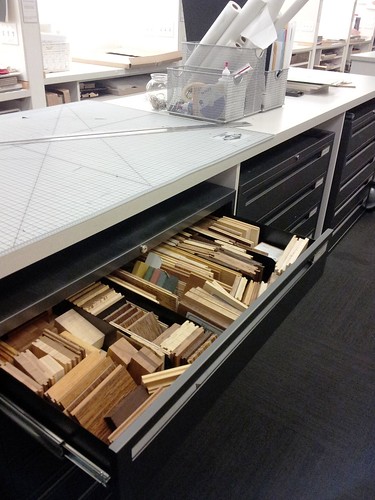
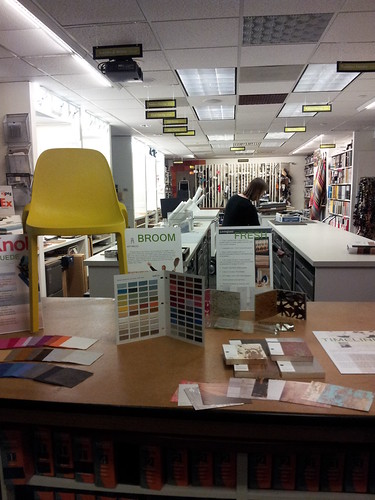
---------------------------------------------------------
From the EPA we walked to Callison, a nearby architecture firm. Cindy Davis served us Halloween cookies and showed us the library. Cindy started in marketing at Callison in 1995 after working in a combination marketing/librarian position in Dallas. She pitched the idea of a library and got the green light to start one.

Cindy and her assistant Erin Williamson support a staff of about 400. They get a wide variety of research questions. One day they might find examples of architectural projects using faux and live interior landscapes for comparison, and the next day look up the water systems and climate in a foreign city.
Architects tend to be very visual and often don’t want a lot of text. They like to see what their peers around the world are doing and keep up with current trends. Print materials are still the norm in the library due to the focus on visual information. This keeps the library back from the cutting edge technologically, but focused on the particular needs of those it serves. However, they do have an Intranet site for accessing collections and checking out materials.
The library supports code compliance by making sure the company has complete and up-to-date codes and product standards, often via online access. International projects often are designed to a US-based international code, generally more stringent than local codes. They can also be handed off to overseas firms who handle code compliance. The firm is less involved in the construction phase, but does focus on sustainability. The collection includes resources on sustainable products, and both Cindy and Erin are LEED accredited and understand standards and product requirements.
Cindy developed a cataloging system for the library modeled after the company and its own products and services, putting herself in the architects’ shoes and making materials easy for them to find. Categories include monographs about particular architects, materials, and specific types of buildings.
We also got to see the Design Resource Center, a gallery of resources for interior components and finishes. Anything you can imagine covering a wall or floor or topping a counter can be found there. Lindsay, the center’s manager, works with sales reps on projects and stays abreast of current trends. She puts on product showcases, bringing in vendors to display new products and meet staff members.

Cindy suggests that special librarians understand the library and company’s purposes, and ask lots of questions. Working with different kinds of people, from designers to project managers to IT staff is another key to success. People are often willing to shed their egos with librarians and get our help because they know that we can make them look good. We’ll be challenged to show the value of what we do, but it’s also where we can shine.


Sunday, November 18, 2012
EPA Region 10 Library
This week's post is provided by the University of Washington chapter of the Special Libraries Association. Ann Pool, SLA-UW Distance Representative, wrote the text, and co-Vice Chair Violet Fox provided pictures.
------------------------------------------------
The second SLA library crawl of the quarter took us to downtown Seattle. Our first stop was the EPA Region 10 Library on the 10th floor of the Park Place Building, overlooking Freeway Park. We first checked in at the Public Environmental Resource Center (PERC) where a wide variety of non-technical environmental publications are available free to the public. Liz Doyle, the librarian, met us there and gave us a tour of the library.
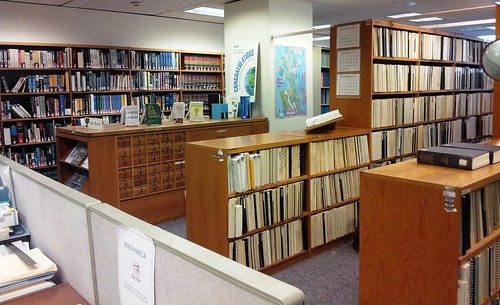
The library has been open since the EPA was established in the early 1970s. Liz works with two assistants: Adam specializes in interlibrary loans, and Kara deals with serials and reference. The main patron base consists of about 600 EPA staff members in Washington, Oregon, Idaho, and Alaska, including those in remote locations. It’s also open to the public. Liz tries to encourage people to come in to the library. Although electronic access has become the most frequent mode of library use, some people do like to come to the library for a quiet work environment.
The library’s technical systems may not be state of the art, but they serve their purposes well. Items are bar coded and checked out with cards issued to each patron. The library uses Inmagic’s DB/TextWorks catalog as well as an agency-wide union catalog. They also have a regional intranet with a library portal listing free and fee-based information. Patrons appreciate the simple interface.
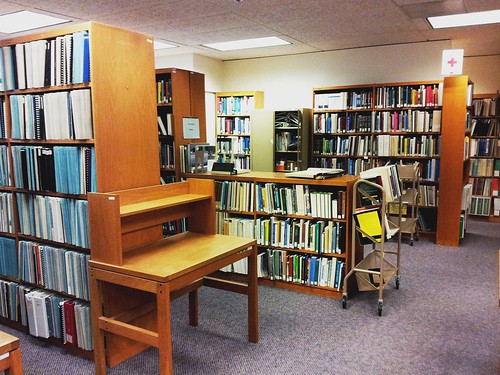
They’ll be moving down to the first floor soon, which will locate them next to the PERC and make them more visible to the public. As often happens with moves, many print documents will be weeded. Liz looks at demand patterns and the possibility of printing on demand when making weeding decisions.
While ready reference questions have declined substantially as people can look up simple questions on line, the library does get a good number of reference requests through their Ask a Librarian online form. Liz told us about a recent question where a staffer needed a new handbook on output-based emissions and was unable to find it. She located it quickly for the patron. Liz also enjoys training people on research locally and through webinars. She often answers small questions but is better able to convey the big picture of the research process through training sessions.
Liz’s prior work experience helped her get hired for her current position. She had worked at law firms after graduating from library school at the University of Michigan, so when the EPA was looking for someone with experience in legal research and cataloging she had the right combination of skills. It pays to learn new things!
------------------------------------------------
The second SLA library crawl of the quarter took us to downtown Seattle. Our first stop was the EPA Region 10 Library on the 10th floor of the Park Place Building, overlooking Freeway Park. We first checked in at the Public Environmental Resource Center (PERC) where a wide variety of non-technical environmental publications are available free to the public. Liz Doyle, the librarian, met us there and gave us a tour of the library.

The library has been open since the EPA was established in the early 1970s. Liz works with two assistants: Adam specializes in interlibrary loans, and Kara deals with serials and reference. The main patron base consists of about 600 EPA staff members in Washington, Oregon, Idaho, and Alaska, including those in remote locations. It’s also open to the public. Liz tries to encourage people to come in to the library. Although electronic access has become the most frequent mode of library use, some people do like to come to the library for a quiet work environment.
The library’s technical systems may not be state of the art, but they serve their purposes well. Items are bar coded and checked out with cards issued to each patron. The library uses Inmagic’s DB/TextWorks catalog as well as an agency-wide union catalog. They also have a regional intranet with a library portal listing free and fee-based information. Patrons appreciate the simple interface.

They’ll be moving down to the first floor soon, which will locate them next to the PERC and make them more visible to the public. As often happens with moves, many print documents will be weeded. Liz looks at demand patterns and the possibility of printing on demand when making weeding decisions.
While ready reference questions have declined substantially as people can look up simple questions on line, the library does get a good number of reference requests through their Ask a Librarian online form. Liz told us about a recent question where a staffer needed a new handbook on output-based emissions and was unable to find it. She located it quickly for the patron. Liz also enjoys training people on research locally and through webinars. She often answers small questions but is better able to convey the big picture of the research process through training sessions.
Liz’s prior work experience helped her get hired for her current position. She had worked at law firms after graduating from library school at the University of Michigan, so when the EPA was looking for someone with experience in legal research and cataloging she had the right combination of skills. It pays to learn new things!
Labels:
closed collection,
digital collections,
environmental information,
federal library,
government documents,
law,
Seattle
Location:
Seattle, WA, USA
Sunday, November 11, 2012
National Library Service for the Blind and Physically Handicapped
Today we're talking about talking book and braille libraries; specifically the National Library Service for the Blind and Physically Handicapped (NLS) administered by the Library of Congress. This service was established in 1931 with an act of congress, commonly known as the Pratt-Smoot act. The text is found in Title 2, Chapter 5, section 135a of the US Code and establishes an annual appropriation in the budget to Library of Congress for the dissemination of books in accessible format.
Unfortunately at the time of writing this, the NLS website is down for maintenance during the entire veterans day weekend. The NLS itself is an office located just north of Columbia Heights in Washington, DC. Visionaware has a great brief description of the service, which I'm copying here because, admittedly, it's easier than paraphrasing.
"The National Library Service for the Blind and Physically Handicapped (NLS), Library of Congress, administers the Braille and Talking Book Library Service, a free program that loans recorded and braille books and magazines, music scores in braille and large print, and specially designed playback equipment to residents of the United States who are unable to read or use standard print materials because of visual or physical impairment.
Local cooperating libraries throughout the United States mail NLS audiobooks, magazines, audio equipment, braille books, and braille magazines directly to enrollees at no cost. Talking books and magazines and braille publications are delivered to eligible borrowers by postage-free mail and through a network of cooperative libraries. Religious publications include: Bibles, Other Scriptures, Liturgies, and Hymnals in Special Media.
From a beginning of 19 cooperating libraries, the network has expanded to 57 regional and 74 subregional libraries throughout the U.S."
Most state libraries administer braille and talking book libraries through State Libraries. You can find a list of libraries on the NLS website, or use this list from VisionAware. Check out the Washington Talking Book and Braille Library for an example of the services available at the state level.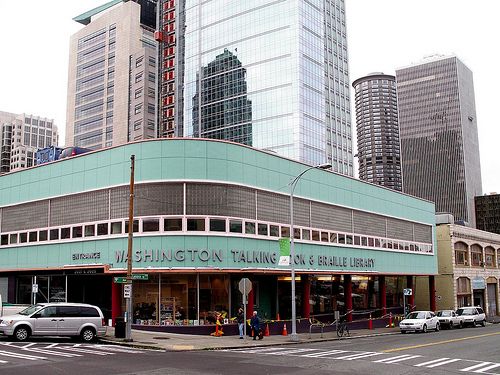
The service provided by the NLS and the network of libraries is invaluable for connecting the visually impaired with accessible information, literature, and technology tools. I highly recommend visiting a library in your area to learn more about the amazing technology available, and the programs operating locally across the nation. If you're interested in this area of librarianship as a career path and in working in DC, NLS has a job opening for a Digital Reference Librarian. The post is open until December 6th. The application process is fairly rigorous and Library of Congress still requires full KSA essays. Good luck if you apply. And as my closing, here's an interesting example of the material transcribed into braille by the NLS.
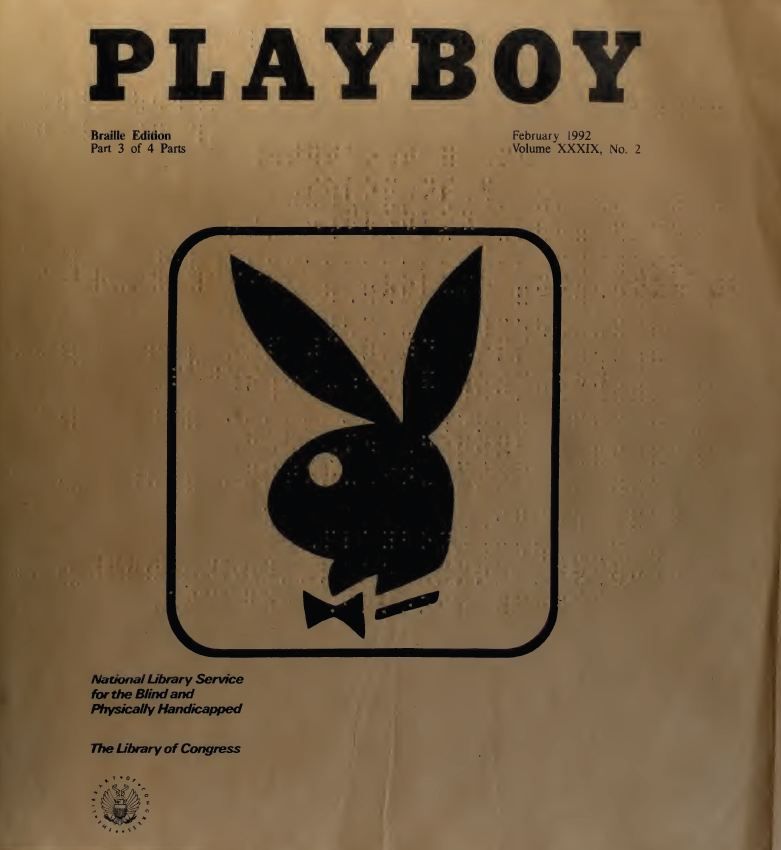
Unfortunately at the time of writing this, the NLS website is down for maintenance during the entire veterans day weekend. The NLS itself is an office located just north of Columbia Heights in Washington, DC. Visionaware has a great brief description of the service, which I'm copying here because, admittedly, it's easier than paraphrasing.
"The National Library Service for the Blind and Physically Handicapped (NLS), Library of Congress, administers the Braille and Talking Book Library Service, a free program that loans recorded and braille books and magazines, music scores in braille and large print, and specially designed playback equipment to residents of the United States who are unable to read or use standard print materials because of visual or physical impairment.
Local cooperating libraries throughout the United States mail NLS audiobooks, magazines, audio equipment, braille books, and braille magazines directly to enrollees at no cost. Talking books and magazines and braille publications are delivered to eligible borrowers by postage-free mail and through a network of cooperative libraries. Religious publications include: Bibles, Other Scriptures, Liturgies, and Hymnals in Special Media.
From a beginning of 19 cooperating libraries, the network has expanded to 57 regional and 74 subregional libraries throughout the U.S."
Most state libraries administer braille and talking book libraries through State Libraries. You can find a list of libraries on the NLS website, or use this list from VisionAware. Check out the Washington Talking Book and Braille Library for an example of the services available at the state level.

The service provided by the NLS and the network of libraries is invaluable for connecting the visually impaired with accessible information, literature, and technology tools. I highly recommend visiting a library in your area to learn more about the amazing technology available, and the programs operating locally across the nation. If you're interested in this area of librarianship as a career path and in working in DC, NLS has a job opening for a Digital Reference Librarian. The post is open until December 6th. The application process is fairly rigorous and Library of Congress still requires full KSA essays. Good luck if you apply. And as my closing, here's an interesting example of the material transcribed into braille by the NLS.

Labels:
accessible collections,
databases,
digital collections,
federal library,
national service,
public library,
state library
Location:
Washington, DC, USA
Sunday, November 4, 2012
The Hirshhorn Library
The Hirshhorn Museum is part of the Smithsonian Institution and houses an impressive collection of art. The Hirshhorn is located on the National Mall next to the Air & Space Museum  and also maintains the sculpture garden which has some interesting pieces by Rodin among others. The museum is developed around the core collection bequeathed to the Smithsonian by the Founder Joseph Hirshhorn in the 1960s. The collection spans impressionism to modern pieces and is a beautiful representation of 19th and 20th century art.
and also maintains the sculpture garden which has some interesting pieces by Rodin among others. The museum is developed around the core collection bequeathed to the Smithsonian by the Founder Joseph Hirshhorn in the 1960s. The collection spans impressionism to modern pieces and is a beautiful representation of 19th and 20th century art.
The Library was founded with the museum in 1969 and is a research collection developed to complement the art found in the museum. It contains exhibition catalogs, serials, and ephemera. The library also participates in publication exchange. I had the opportunity to spend some time in the library photographing some of the Artists Books for the internal digital asset management system as part of a project to review the collection materials for an exhibition. It was wonderful to learn about the collection and get a glimpse into the workings of an art library and Smithsonian Institution Collections.
Navigating the Hirshhorn Museum and Library website is a lesson in patience. The site is difficult to maneuver and incredibly over designed. It is a solid representation of how to make something visually stimulating but practically unusable. I do not have any pictures of the library itself. The library is not open to walk-ins because it is located on the fourth floor of the Hirshhorn Museum building. It is accessible through the elevator, however the floor is closed to the public because it contains staff offices. Anyone is welcome to use the Hirshhorn’s library by appointment. Arrange a visit by emailing hmsglibmail@si.edu or calling(202) 633-2836. The elevator is quite cozy, fitting no more than five people reasonably, with a guard stationed inside to check access for the fourth floor. Security in the Hirshhorn elevator is not a position for someone with claustrophobia, that's for sure.
I did take two pictures of some of the art in the collection, because I found the first a little disturbing (he greets you in the basement floor as you come around the corner, is massive, and quite lifelike. The other is a collection of painting that reminded me of a friend's tattoo of Kazimir Malevich's 'Black Square on White Canvas'. I snapped it to text to her. It's actually a very well done tattoo. I don't remember either artist. If any reader does, please post in the comments. My lack of foresight into the usefulness of more pictures when I had the chance means that given the opportunity, you'll have to visit for yourself. You can browse the catalog to see what's of interest. This catalog links to all the Smithsonian libraries. The Hirshhorn Library is an impressive research collection and dose contain over 60,000 items, many unique and some quite rare. Each Smithsonian library maintains a unique collection and I hope to visit them all someday.


 and also maintains the sculpture garden which has some interesting pieces by Rodin among others. The museum is developed around the core collection bequeathed to the Smithsonian by the Founder Joseph Hirshhorn in the 1960s. The collection spans impressionism to modern pieces and is a beautiful representation of 19th and 20th century art.
and also maintains the sculpture garden which has some interesting pieces by Rodin among others. The museum is developed around the core collection bequeathed to the Smithsonian by the Founder Joseph Hirshhorn in the 1960s. The collection spans impressionism to modern pieces and is a beautiful representation of 19th and 20th century art. The Library was founded with the museum in 1969 and is a research collection developed to complement the art found in the museum. It contains exhibition catalogs, serials, and ephemera. The library also participates in publication exchange. I had the opportunity to spend some time in the library photographing some of the Artists Books for the internal digital asset management system as part of a project to review the collection materials for an exhibition. It was wonderful to learn about the collection and get a glimpse into the workings of an art library and Smithsonian Institution Collections.
Navigating the Hirshhorn Museum and Library website is a lesson in patience. The site is difficult to maneuver and incredibly over designed. It is a solid representation of how to make something visually stimulating but practically unusable. I do not have any pictures of the library itself. The library is not open to walk-ins because it is located on the fourth floor of the Hirshhorn Museum building. It is accessible through the elevator, however the floor is closed to the public because it contains staff offices. Anyone is welcome to use the Hirshhorn’s library by appointment. Arrange a visit by emailing hmsglibmail@si.edu or calling(202) 633-2836. The elevator is quite cozy, fitting no more than five people reasonably, with a guard stationed inside to check access for the fourth floor. Security in the Hirshhorn elevator is not a position for someone with claustrophobia, that's for sure.
I did take two pictures of some of the art in the collection, because I found the first a little disturbing (he greets you in the basement floor as you come around the corner, is massive, and quite lifelike. The other is a collection of painting that reminded me of a friend's tattoo of Kazimir Malevich's 'Black Square on White Canvas'. I snapped it to text to her. It's actually a very well done tattoo. I don't remember either artist. If any reader does, please post in the comments. My lack of foresight into the usefulness of more pictures when I had the chance means that given the opportunity, you'll have to visit for yourself. You can browse the catalog to see what's of interest. This catalog links to all the Smithsonian libraries. The Hirshhorn Library is an impressive research collection and dose contain over 60,000 items, many unique and some quite rare. Each Smithsonian library maintains a unique collection and I hope to visit them all someday.


Labels:
art,
international collection,
museum
Location:
Washington, DC, USA
Sunday, October 28, 2012
Fayetteville Free Library Fab Lab and Makerspaces
This week I'd like to talk about a concept popping up in public libraries around the country, makerspaces. I've heard buzz about this concept for a while, and then saw the cover of the October issue of Library Journal, with several articles about makerspaces and decided to talk about the topic this week.
What is a makerspace? These are spaces that provide equipment and resources for people to collaborate on projects and make things. That's it in a sentence, but they are really much more. For more detail, read the three part series from the October issue of Library Journal.
1. The Makings of Maker Spaces
2. Express Yourself
3. Fabricating a Fabulous Home for CoCreation
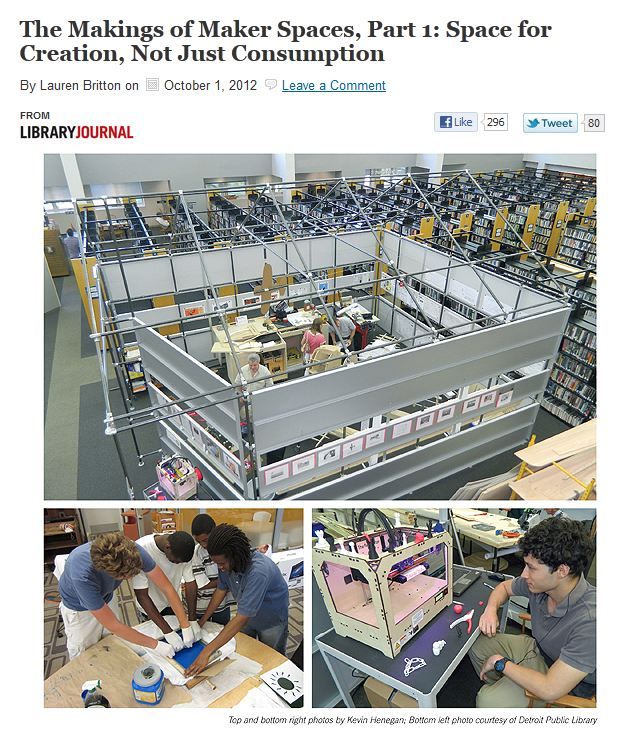
There are several notable library blogs that have great information about makerspaces, such as The Unquiet Librarian and Librarian.net. See also this article on Sharable which includes an interview with Lauren Britton, who developed the Fayetteville Free Library Fab Lab and co-authored the three part series in Library Journal.
To learn more about makerspaces in public libraries, check out this webinar series from the American Library Association.. There is one recording available from the October 15th session, and three upcoming, November 19, December 3, and January 7. Also read up on Tekventure, an Indiana effort to provide makerspace to the public. For images of what these spaces can look like, check out these articles from Makerbot.

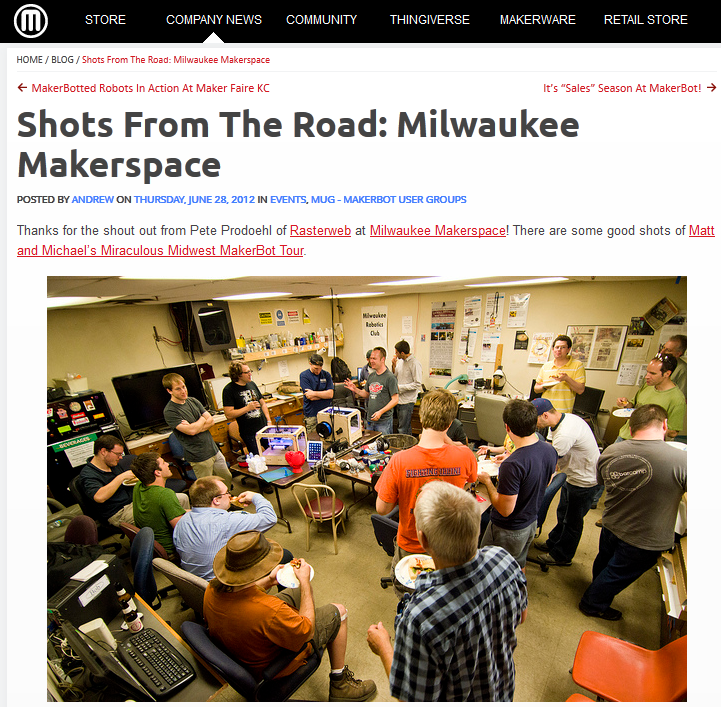
What is a makerspace? These are spaces that provide equipment and resources for people to collaborate on projects and make things. That's it in a sentence, but they are really much more. For more detail, read the three part series from the October issue of Library Journal.
1. The Makings of Maker Spaces
2. Express Yourself
3. Fabricating a Fabulous Home for CoCreation

There are several notable library blogs that have great information about makerspaces, such as The Unquiet Librarian and Librarian.net. See also this article on Sharable which includes an interview with Lauren Britton, who developed the Fayetteville Free Library Fab Lab and co-authored the three part series in Library Journal.
To learn more about makerspaces in public libraries, check out this webinar series from the American Library Association.. There is one recording available from the October 15th session, and three upcoming, November 19, December 3, and January 7. Also read up on Tekventure, an Indiana effort to provide makerspace to the public. For images of what these spaces can look like, check out these articles from Makerbot.


Location:
Fayetteville, NY 13066, USA
Sunday, October 21, 2012
San Diego Zoo Library
Zoos have libraries. Go figure. I discovered this bit of information recently when I saw a job posting for an Associate Director of Library Services at the San Diego Zoo Global Library. The position closed to applications on October 11th, however here is the link to the job posting for anyone interested, and this is a link to a .pdf I've uploaded to Google Docs for posterity. The existence of libraries in zoos had never occurred to me. Then I realized, of course zoos have libraries. Zoos need access to veterinary collections for animal care, biological research, zoo history, current practice in animal care, to name a few needs.
I spent some time on the San Diego Zoo's library website and was impressed with the resources available. Check out these Fact Sheets. They are HTML pages that cover a breadth of topics. I dig the hippopotamus photo.

The zoo library has over 11,000 books and 400+ journal titles. There are archives and rare books, as well as general reference services and information. It looks like a great library resource. I borrowed some photos from the website to give you a look. Click the photos to visit the library home page.
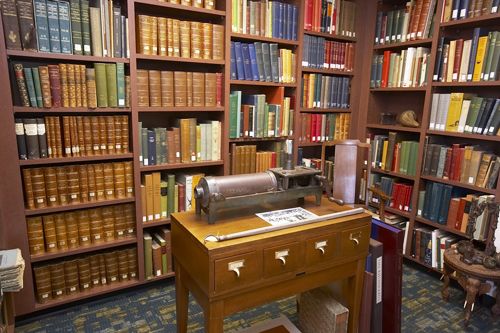

I spent some time on the San Diego Zoo's library website and was impressed with the resources available. Check out these Fact Sheets. They are HTML pages that cover a breadth of topics. I dig the hippopotamus photo.

The zoo library has over 11,000 books and 400+ journal titles. There are archives and rare books, as well as general reference services and information. It looks like a great library resource. I borrowed some photos from the website to give you a look. Click the photos to visit the library home page.


Labels:
Archives,
mammals,
rare books,
science,
special collection,
zoology
Location:
San Diego, CA, USA
Sunday, October 14, 2012
The Foundation Center
Today's post is about the Foundation Center library in Washington, DC. The Foundation Center is a non-profit organization founded in 1956 and is one of the largest resources on philanthropic organizations in the world. According to the website "Thousands of people visit the Center's web site each day and are served in its five regional library/learning centers and its network of 450 funding information centers located in public libraries, community foundations, and educational institutions nationwide and beyond."
Headquartered in New York, the center maintains four field offices as well as an extensive network of Cooperating Collections. I have not personally visited the library, but filled my information gaps with the helpful video embedded below. Check it out, and definitely visit one of their many locations if you are ever in need of philanthropy resources.
Headquartered in New York, the center maintains four field offices as well as an extensive network of Cooperating Collections. I have not personally visited the library, but filled my information gaps with the helpful video embedded below. Check it out, and definitely visit one of their many locations if you are ever in need of philanthropy resources.
Labels:
economic development,
finance,
independent agency,
non-profit,
philanthropy,
Special Library
Location:
Washington, DC, USA
Sunday, October 7, 2012
Historical Medical Library of the College of Physicians of Philadelphia
A few weeks ago I spent a weekend in Philadelphia with my husband. It was my first time in the city and we did the usual visit to the birthplace of democracy; Independence Hall, the Liberty Bell, Betsy Ross's house, Ben Franklin's print shop and post office, and Elfreth's Alley. We barely scratched the surface of things to do, but only had one day in the city. We decided to spend the afternoon visiting the Mütter Museum.
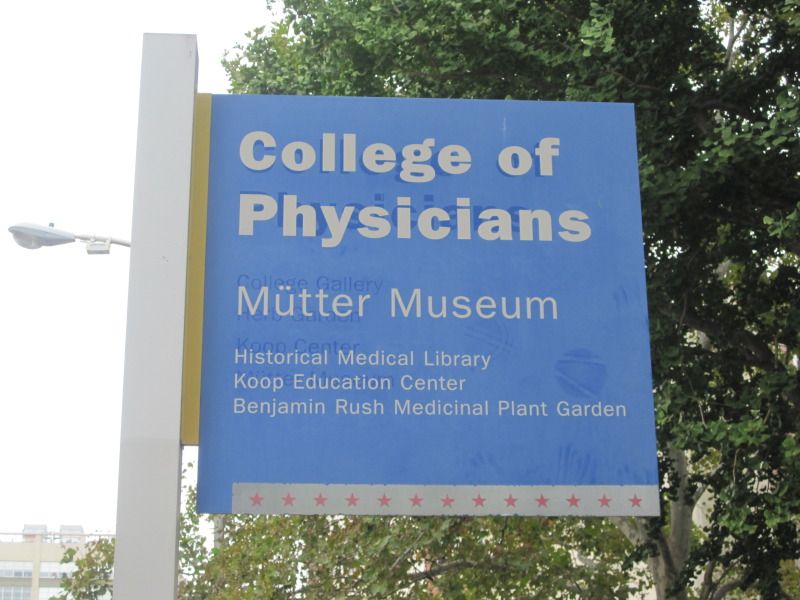
The museum is amazing. It definitely has disturbing elements. For me, the wall of fetal deformities was a little difficult to take in. There were exhibits linking Grimm's Fairy tales to medical conditions, and I learned more than I ever intended about skin conditions and the assassinations of Lincoln and Garfield. Check out this article from the British Society for the History of Science Travel Guide for more information about the museum. There was a wonderful quote on a display description that sums up the importance of the collection well.
"A great museum collection is as important to medical education as a great library because specimens are nature's books"
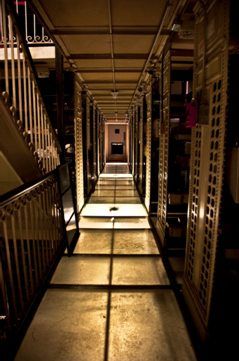 While at the Mütter I learned about the Historical Medical Library also housed in the building. Established in 1788, it's one of the world's premier research collections into the history of medicine. Over 400 incunables, manuscripts, archives, and 19th and 20th century medical journals. Sadly, I did not have an appointment, so I could not visit the stacks. The library is open by appointment only Tuesday, Wednesday, and Thursday, 10:00am to 4:00pm.
While at the Mütter I learned about the Historical Medical Library also housed in the building. Established in 1788, it's one of the world's premier research collections into the history of medicine. Over 400 incunables, manuscripts, archives, and 19th and 20th century medical journals. Sadly, I did not have an appointment, so I could not visit the stacks. The library is open by appointment only Tuesday, Wednesday, and Thursday, 10:00am to 4:00pm.
If you want to see specifics, you can search the catalog online. The Catalog search help is fairly comprehensive if you would like a tutorial in how to use their catalog system.
Also available for distance visitors are the digital resources, Digital Books and two digitized 18th Century Manuscripts.
See the library website for history of the collection, or read this very informative article from the Pennsylvania Center for the Book, which is part of the Literary and Cultural Heritage Map. Photos are not allowed within the museum so these shots of the door and the one taken from the library website above will have to satisfy your visual cravings.


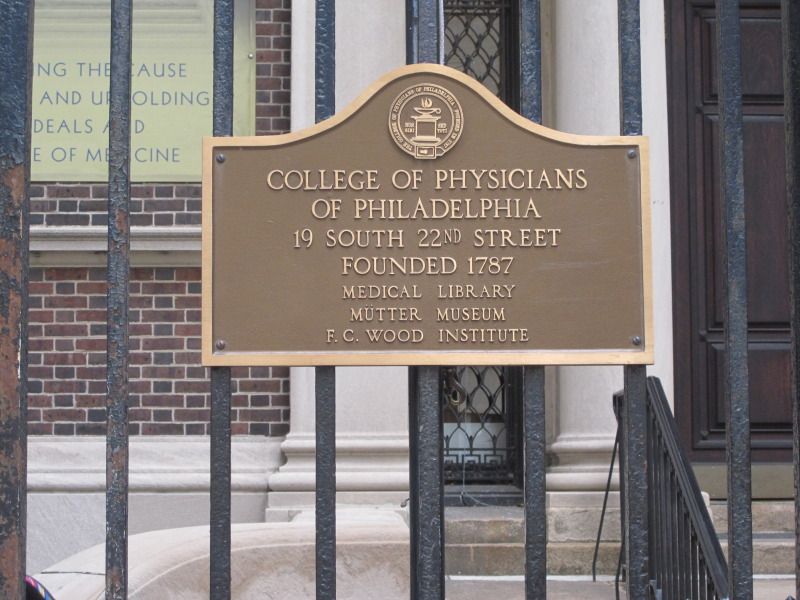

The museum is amazing. It definitely has disturbing elements. For me, the wall of fetal deformities was a little difficult to take in. There were exhibits linking Grimm's Fairy tales to medical conditions, and I learned more than I ever intended about skin conditions and the assassinations of Lincoln and Garfield. Check out this article from the British Society for the History of Science Travel Guide for more information about the museum. There was a wonderful quote on a display description that sums up the importance of the collection well.
"A great museum collection is as important to medical education as a great library because specimens are nature's books"
 While at the Mütter I learned about the Historical Medical Library also housed in the building. Established in 1788, it's one of the world's premier research collections into the history of medicine. Over 400 incunables, manuscripts, archives, and 19th and 20th century medical journals. Sadly, I did not have an appointment, so I could not visit the stacks. The library is open by appointment only Tuesday, Wednesday, and Thursday, 10:00am to 4:00pm.
While at the Mütter I learned about the Historical Medical Library also housed in the building. Established in 1788, it's one of the world's premier research collections into the history of medicine. Over 400 incunables, manuscripts, archives, and 19th and 20th century medical journals. Sadly, I did not have an appointment, so I could not visit the stacks. The library is open by appointment only Tuesday, Wednesday, and Thursday, 10:00am to 4:00pm. If you want to see specifics, you can search the catalog online. The Catalog search help is fairly comprehensive if you would like a tutorial in how to use their catalog system.
Also available for distance visitors are the digital resources, Digital Books and two digitized 18th Century Manuscripts.
See the library website for history of the collection, or read this very informative article from the Pennsylvania Center for the Book, which is part of the Literary and Cultural Heritage Map. Photos are not allowed within the museum so these shots of the door and the one taken from the library website above will have to satisfy your visual cravings.



Labels:
academic,
Archives,
closed collection,
Manuscripts,
medicine,
object collection,
rare books,
science
Location:
Philadelphia, PA, USA
Sunday, September 30, 2012
The Floral Library
If you've ever found yourself near the tidal basin in Washington, DC, just across the Kutz bridge and looked to your right at the intersection of Independence and Marine Ave, you may have seen some flower beds and wondered, what's up with those? The beds are the Floral Library, maintained by the National Parks Service National Mall & Memorial Parks department. Also known as the 'Tulip Library', the 93 beds were founded in 1969 as part of Lady Bird Johnson's Capital Beautification Project.
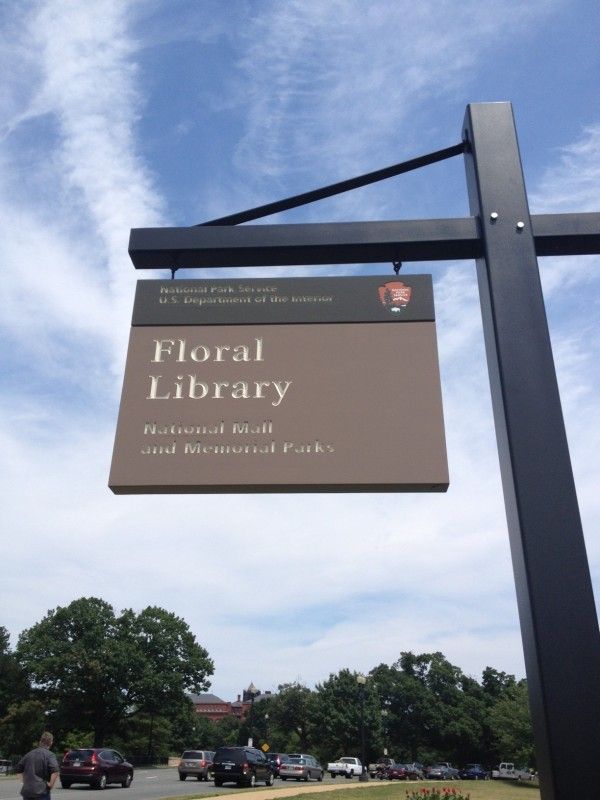
I had the wonderful opportunity to interview Alice McLarty, Landscape Architect, and Maureen Joseph, Regional Historic Landscape Architect, about the floral library. There are few links online that talk about the library's history or current care. This one mentions the tulip garden, however the article from the National Park Service is actually almost exclusively about tulips. Alice and Maureen were kind enough to fill me in on the details. I'd like to say that their jobs are fascinating. I'd talk more about them, but this post would go on forever. I'll just say I love being a librarian, but were I to go back in time and have a choice, I might choose historic landscape architect as a career.
When the library began to bloom in the spring of 1969, there were 95 varieties of tulips planted in groups of 100 to 200. Then Regional Director Nash Castro said in a press release from March 1969, "The concept of the library is to give interested persons an opportunity to study and compare the tulip varieties as well as view them at close range and at a leisurely pace." There were three seasonal plantings with Tulips in the spring, annuals in the summer, and chrysanthemums in the fall
The beds haven't changed much in the intervening 43 years. There are now 93 beds due to sidewalk widening a few years ago. There are two planting seasons, tulips and annuals, and the annuals tend to last into the fall. The ground maintenance staff maintains the beds and McLarty manages the ordering and evaluates how plants are doing. McLarty said of the selection, "The varieties generally are the same year after year, but with substitutions by the grower for various reasons, and changes by our staff if we see that a particular plant is not doing well. Or if conditions change, such as the elimination of shade loving annuals after the huge elm tree, which had shaded the west end for years, died. We have no shade loving annuals anymore, but someday we will again when the replacement elm gets larger."
The layout has remained essentially the same. This link takes you to the 2012 library map. You can see the shift from 95 to 93 beds, when compared to this library map for the chrysanthemums from 1971. This announcement shows the original designer, Darwina Neal, among the tulips.
This announcement shows the original designer, Darwina Neal, among the tulips.
 These pictures were taken in July, when the annuals were in bloom. The official name of this library without books is the Floral Library, however many people still refer to the beds as the Tulip Library. It's not known why, as McLarty mentioned, even when it started it had three distinct planting seasons.
These pictures were taken in July, when the annuals were in bloom. The official name of this library without books is the Floral Library, however many people still refer to the beds as the Tulip Library. It's not known why, as McLarty mentioned, even when it started it had three distinct planting seasons.

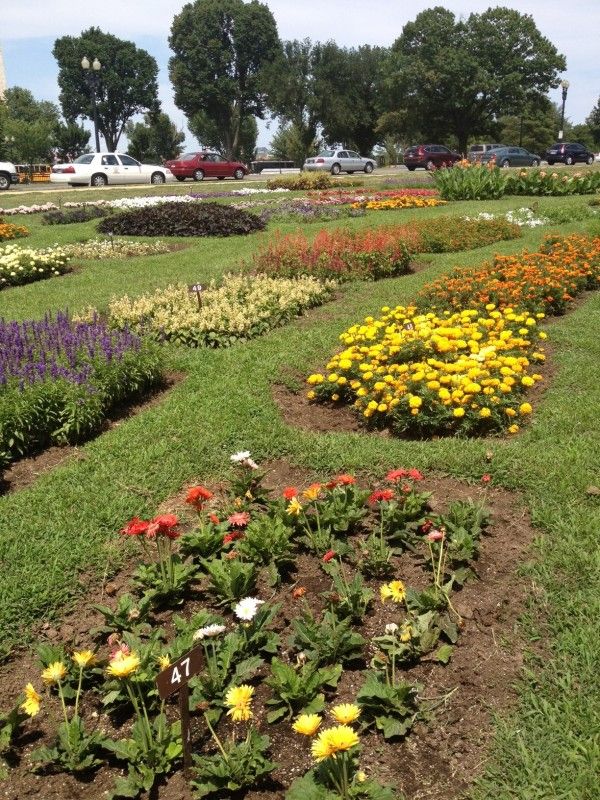
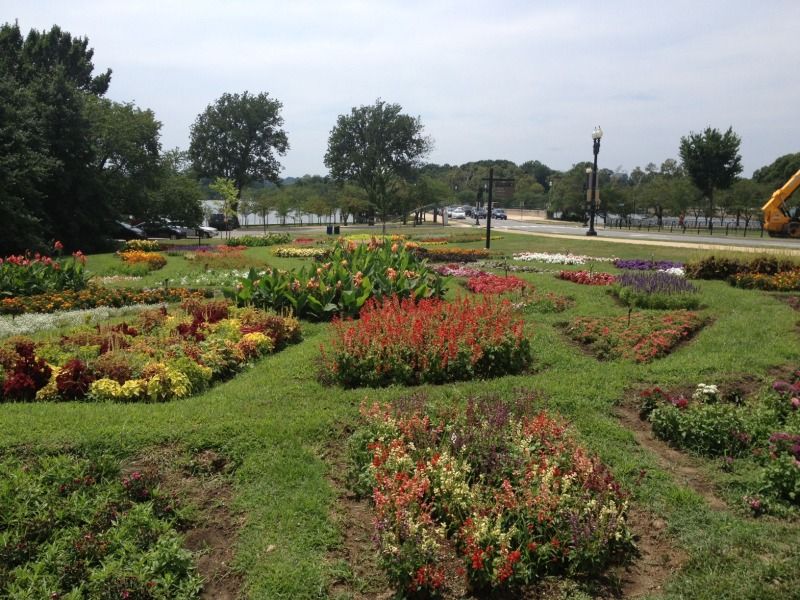
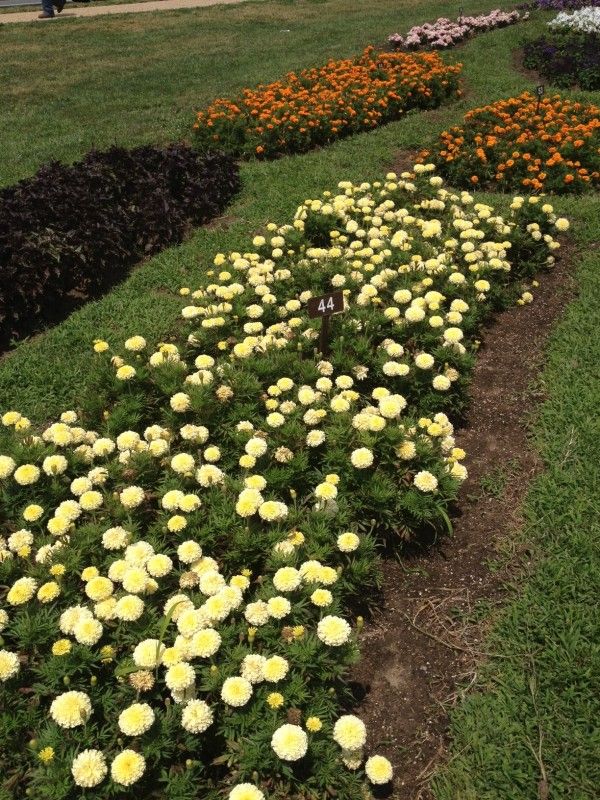
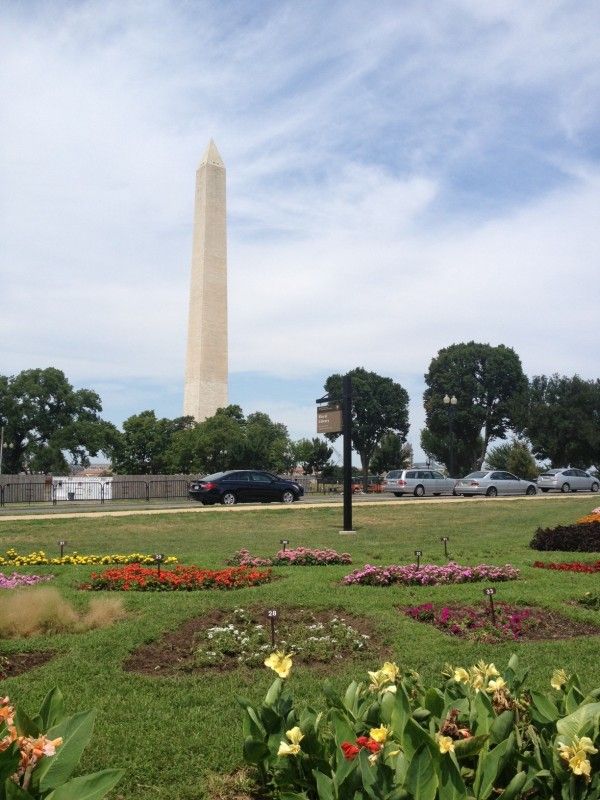

I had the wonderful opportunity to interview Alice McLarty, Landscape Architect, and Maureen Joseph, Regional Historic Landscape Architect, about the floral library. There are few links online that talk about the library's history or current care. This one mentions the tulip garden, however the article from the National Park Service is actually almost exclusively about tulips. Alice and Maureen were kind enough to fill me in on the details. I'd like to say that their jobs are fascinating. I'd talk more about them, but this post would go on forever. I'll just say I love being a librarian, but were I to go back in time and have a choice, I might choose historic landscape architect as a career.
When the library began to bloom in the spring of 1969, there were 95 varieties of tulips planted in groups of 100 to 200. Then Regional Director Nash Castro said in a press release from March 1969, "The concept of the library is to give interested persons an opportunity to study and compare the tulip varieties as well as view them at close range and at a leisurely pace." There were three seasonal plantings with Tulips in the spring, annuals in the summer, and chrysanthemums in the fall
The beds haven't changed much in the intervening 43 years. There are now 93 beds due to sidewalk widening a few years ago. There are two planting seasons, tulips and annuals, and the annuals tend to last into the fall. The ground maintenance staff maintains the beds and McLarty manages the ordering and evaluates how plants are doing. McLarty said of the selection, "The varieties generally are the same year after year, but with substitutions by the grower for various reasons, and changes by our staff if we see that a particular plant is not doing well. Or if conditions change, such as the elimination of shade loving annuals after the huge elm tree, which had shaded the west end for years, died. We have no shade loving annuals anymore, but someday we will again when the replacement elm gets larger."
The layout has remained essentially the same. This link takes you to the 2012 library map. You can see the shift from 95 to 93 beds, when compared to this library map for the chrysanthemums from 1971.
 This announcement shows the original designer, Darwina Neal, among the tulips.
This announcement shows the original designer, Darwina Neal, among the tulips.  These pictures were taken in July, when the annuals were in bloom. The official name of this library without books is the Floral Library, however many people still refer to the beds as the Tulip Library. It's not known why, as McLarty mentioned, even when it started it had three distinct planting seasons.
These pictures were taken in July, when the annuals were in bloom. The official name of this library without books is the Floral Library, however many people still refer to the beds as the Tulip Library. It's not known why, as McLarty mentioned, even when it started it had three distinct planting seasons. 




Labels:
federal library,
object collection
Location:
Washington, DC, USA
Sunday, September 23, 2012
Beautiful Private Libraries
This week's post is about beautiful private libraries. These are libraries and studies in private homes. They might have been constructed with consultation of librarians, but probably do not employ one for maintenance. They are pulchritudinous and enviable. The inspiration for this post is an article that was written in the Star Tribune, A Remodel For the Books. I dream of one day having a beautiful library, and thought today I'd share a few special library eyegasms with you. Click the picture to navigate to the posts and lose yourself in some stunning libraries.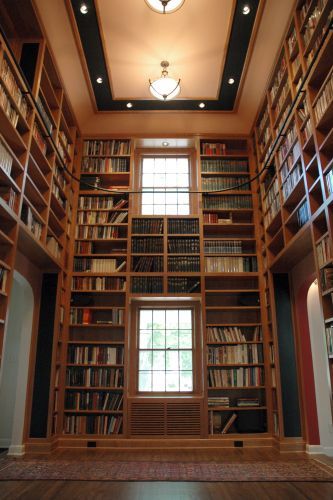

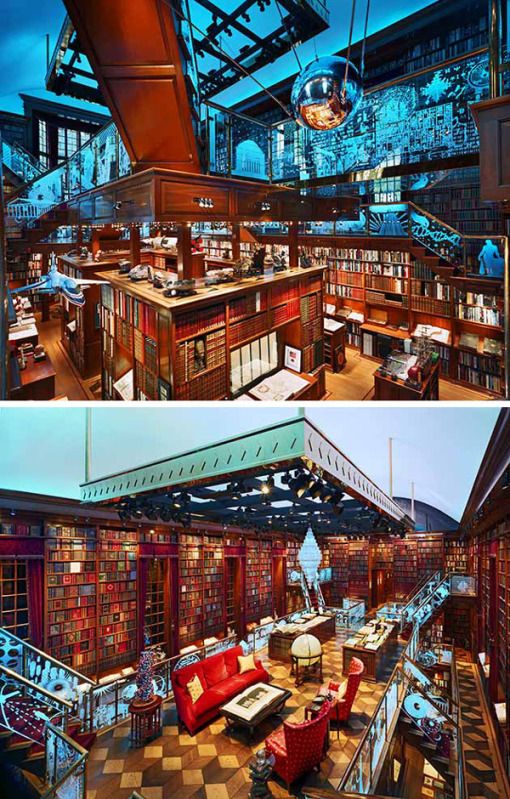

The Art of Manliness website has a post on The Libraries of 15 Famous Men. I've visited George Washington's Study at Mount Vernon. It is rather nice, and George and Martha had great taste in paint. As a final note, this is a shot of George C. Marshall's sitting room, which I fell in love with when I toured his house, Dodona Manor.
As a final note, this is a shot of George C. Marshall's sitting room, which I fell in love with when I toured his house, Dodona Manor. 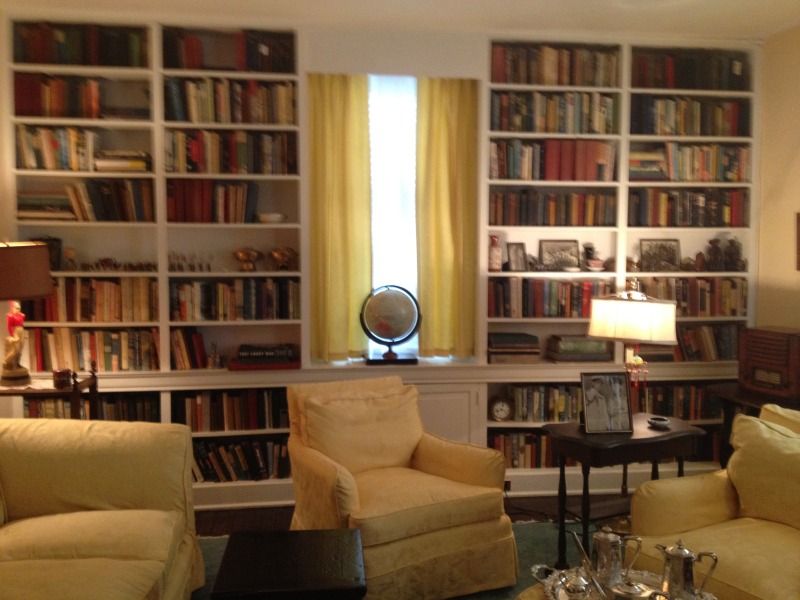 Remember to check back next week. The post will feature an interview with two landscape architects with the National Parks Service and the Floral Library on the National Mall.
Remember to check back next week. The post will feature an interview with two landscape architects with the National Parks Service and the Floral Library on the National Mall.




The Art of Manliness website has a post on The Libraries of 15 Famous Men. I've visited George Washington's Study at Mount Vernon. It is rather nice, and George and Martha had great taste in paint.
 As a final note, this is a shot of George C. Marshall's sitting room, which I fell in love with when I toured his house, Dodona Manor.
As a final note, this is a shot of George C. Marshall's sitting room, which I fell in love with when I toured his house, Dodona Manor.  Remember to check back next week. The post will feature an interview with two landscape architects with the National Parks Service and the Floral Library on the National Mall.
Remember to check back next week. The post will feature an interview with two landscape architects with the National Parks Service and the Floral Library on the National Mall.
Sunday, September 16, 2012
Public Law Library of King County
Law Libraries come in many forms. Law schools are required to have law libraries, which tend to be administratively separate from university library systems. Most academic law libraries tend to be closed to the public, unless they are depositories within the federal depository library program, or the campus is more open to the public. It varies, as to the level of public access for these libraries as their primary purpose is to serve the school to which they are attached. Most law firms, court houses, counties, and cities have law libraries. Many special or public libraries contain legal collections although law might not be the primary collection focus.
The King County Law Library in Washington State is a public law library that provides access to legal resources for free to anyone who visits the two locations; the King County Courthouse in downtown Seattle or the Maleng Regional Justice Center in Kent, WA. The law library provides check-out privileges to Subscribers. Other services include Conference Room Space, computer use, and access to legal and research databases. The library offers classes on legal topics for a range of experience levels.
The mission of the Public Law Library of King County is to provide the public with access to legal resources. "Without access to information, there is no justice. Public Law Library of King County aids all persons with their need for legal information by providing legal materials, training, education, and services in a welcoming and positive environment." Law librarianship is a fascinating field that tends to draw on people with legal degrees. Most take specialized courses within an MLIS program, or a condensed program in addition to possessing a law degree. Not all law librarians have law degrees, but most have prior legal experience. Law librarians are not practicing layers and cannot give legal advice, but can direct patrons to resources or provide direction to where to find legal counsel.
I had the opportunity to visit the law library in the King County Courthouse with a group of MLIS students as part of a library crawl with the University of Washington chapter of the Special Library Association. In addition to the collections and helpful staff, they also have great views of some Seattle landmarks, such as the Smith Tower.



![]()


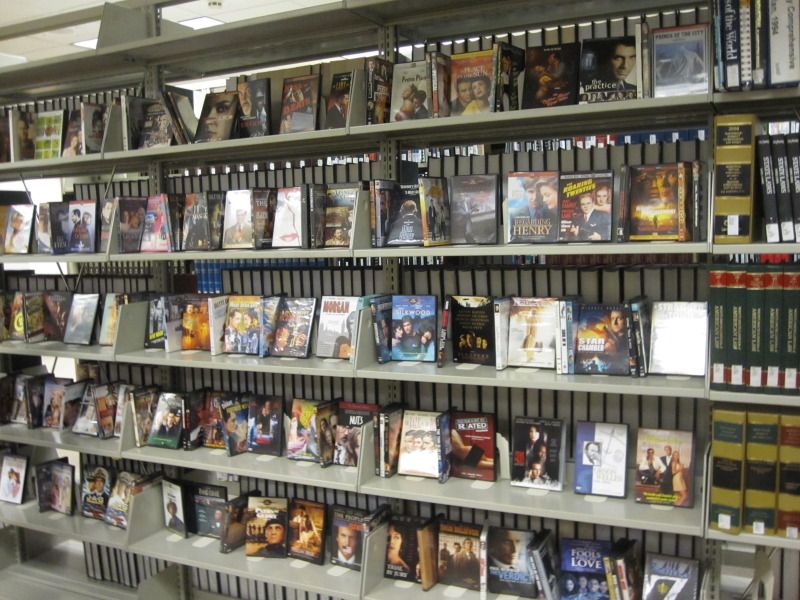
![]()


The King County Law Library in Washington State is a public law library that provides access to legal resources for free to anyone who visits the two locations; the King County Courthouse in downtown Seattle or the Maleng Regional Justice Center in Kent, WA. The law library provides check-out privileges to Subscribers. Other services include Conference Room Space, computer use, and access to legal and research databases. The library offers classes on legal topics for a range of experience levels.
The mission of the Public Law Library of King County is to provide the public with access to legal resources. "Without access to information, there is no justice. Public Law Library of King County aids all persons with their need for legal information by providing legal materials, training, education, and services in a welcoming and positive environment." Law librarianship is a fascinating field that tends to draw on people with legal degrees. Most take specialized courses within an MLIS program, or a condensed program in addition to possessing a law degree. Not all law librarians have law degrees, but most have prior legal experience. Law librarians are not practicing layers and cannot give legal advice, but can direct patrons to resources or provide direction to where to find legal counsel.
I had the opportunity to visit the law library in the King County Courthouse with a group of MLIS students as part of a library crawl with the University of Washington chapter of the Special Library Association. In addition to the collections and helpful staff, they also have great views of some Seattle landmarks, such as the Smith Tower.








Labels:
databases,
government documents,
law,
Special Library
Location:
Seattle, WA, USA
Sunday, September 9, 2012
Books that Shaped America
This week I'd like to bring the focus back to the Library of Congress to take a look at the Books that Shaped America exhibit on display now through September 29th. The exhibit is part of the multi-year Celebration of the Book. I visited a few weeks ago and very much enjoyed the experience. The exhibit is located in the Southwest Exhibition Hall in the Jefferson Building on Capitol Hill, just outside the Thomas Jefferson Library Exhibition.
The Jefferson Building is open on Saturdays and there was quite a crowd when I was there. It was nice to hear the common exclamation, "I love that book" and to overhear stories of how a particular title was personally influential, or brought up fond memories spent reading. I saw many books that have mattered to me over the years, and each selection was thought provoking in how its existence and influence helped shape America.
If you are able to visit before the end of the month, I highly recommend it. I also want to plug the National Book Festival, taking place on the National Mall September 22-23. I am glad to be able to check it out this year. If it's a bit far for a visit, check out the list of books online to find your favorites. These are a few of mine.
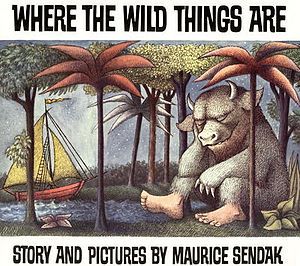



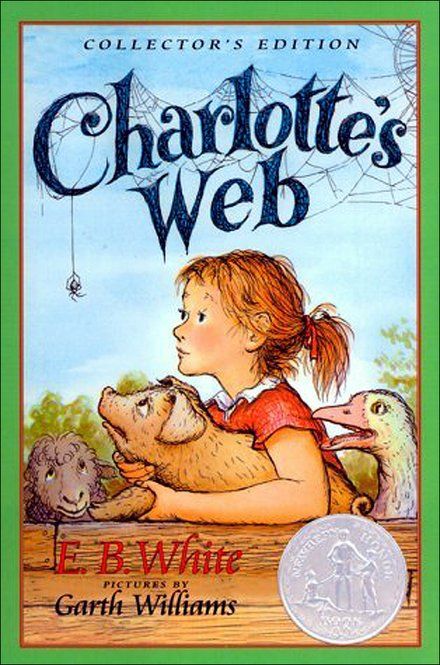
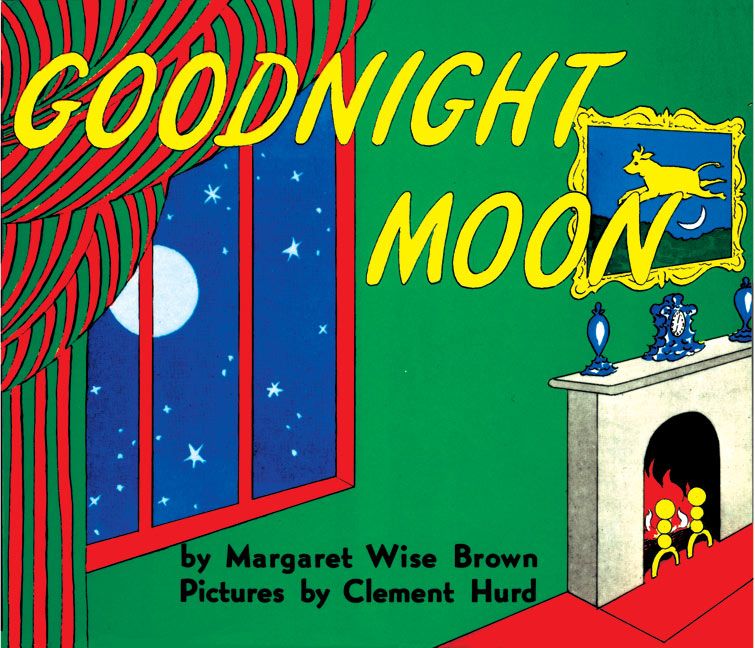
The Jefferson Building is open on Saturdays and there was quite a crowd when I was there. It was nice to hear the common exclamation, "I love that book" and to overhear stories of how a particular title was personally influential, or brought up fond memories spent reading. I saw many books that have mattered to me over the years, and each selection was thought provoking in how its existence and influence helped shape America.
If you are able to visit before the end of the month, I highly recommend it. I also want to plug the National Book Festival, taking place on the National Mall September 22-23. I am glad to be able to check it out this year. If it's a bit far for a visit, check out the list of books online to find your favorites. These are a few of mine.






Location:
Washington, DC, USA
Subscribe to:
Posts (Atom)